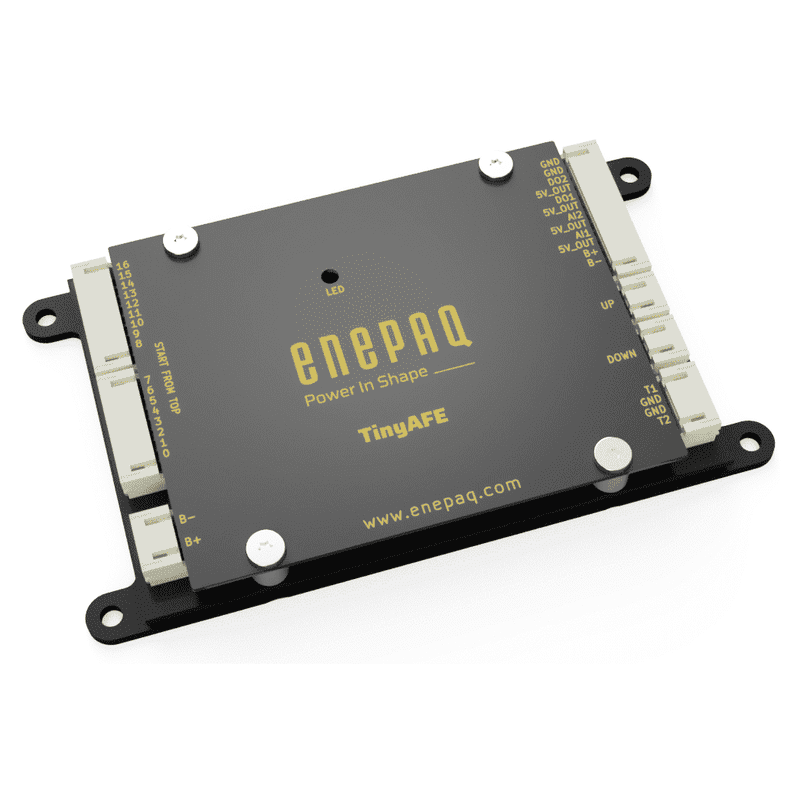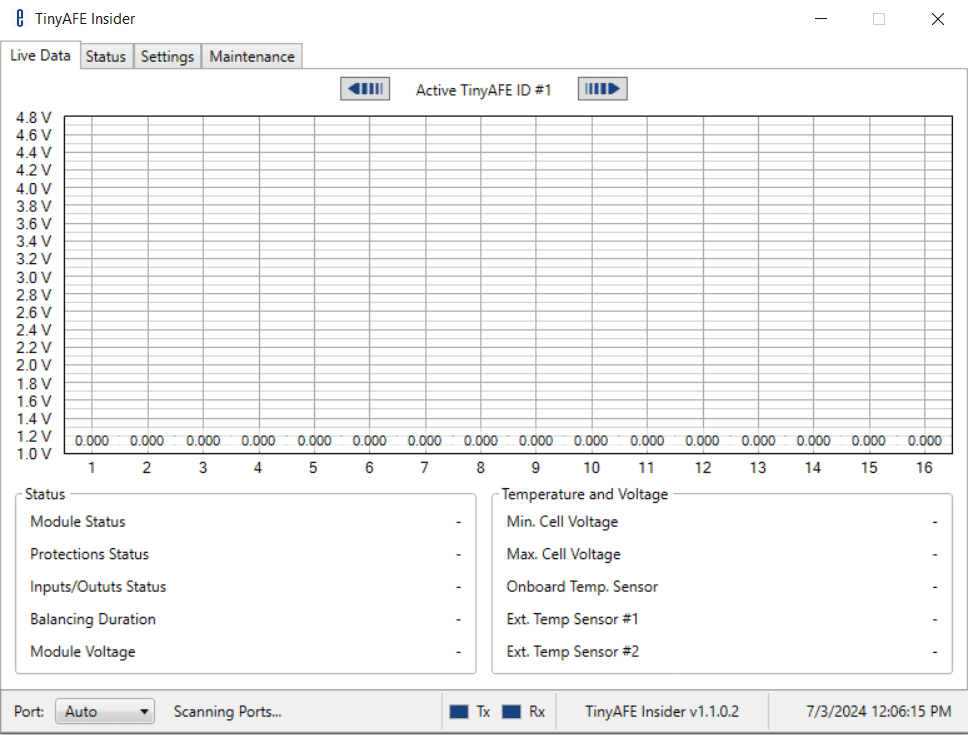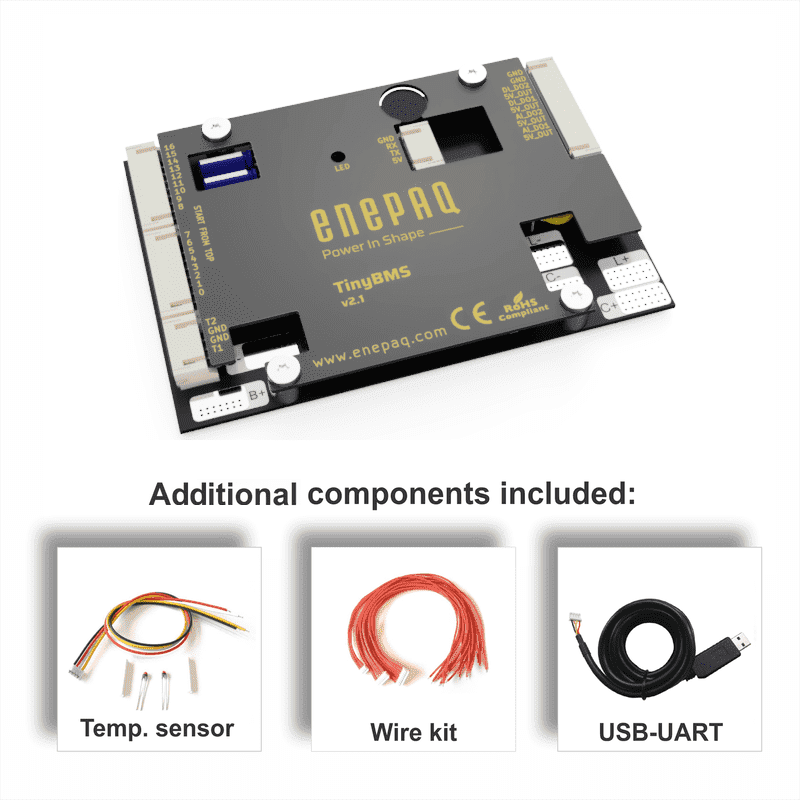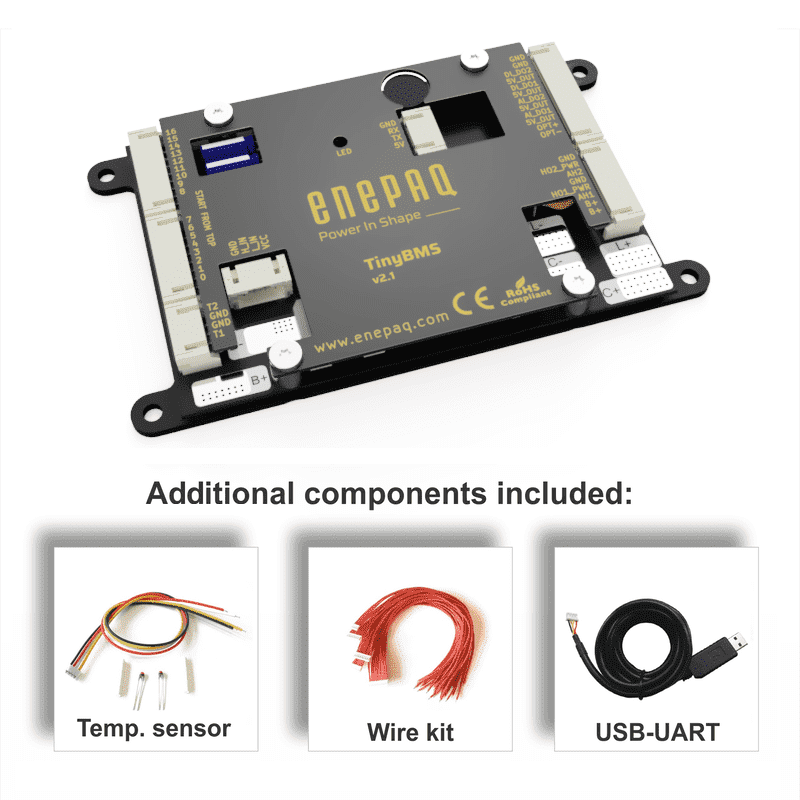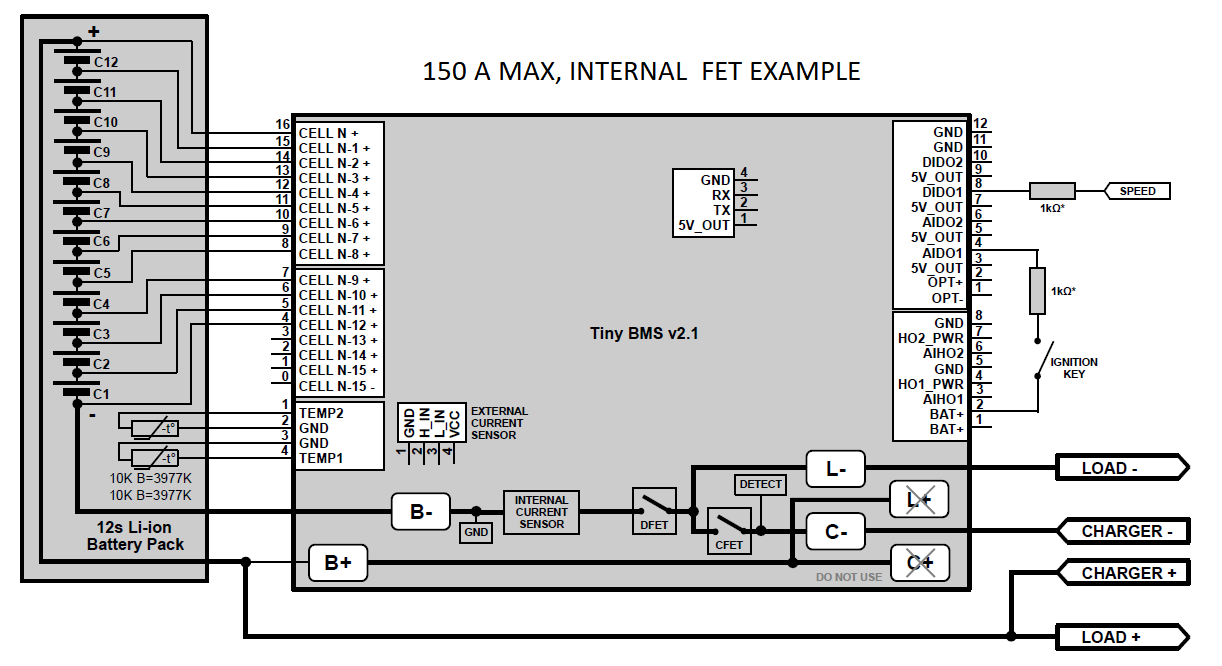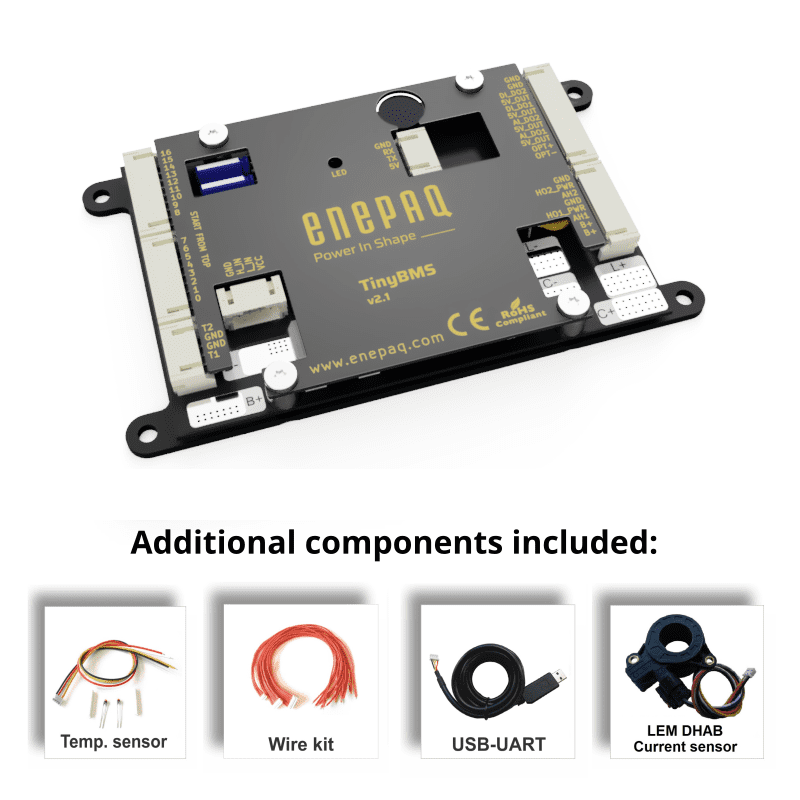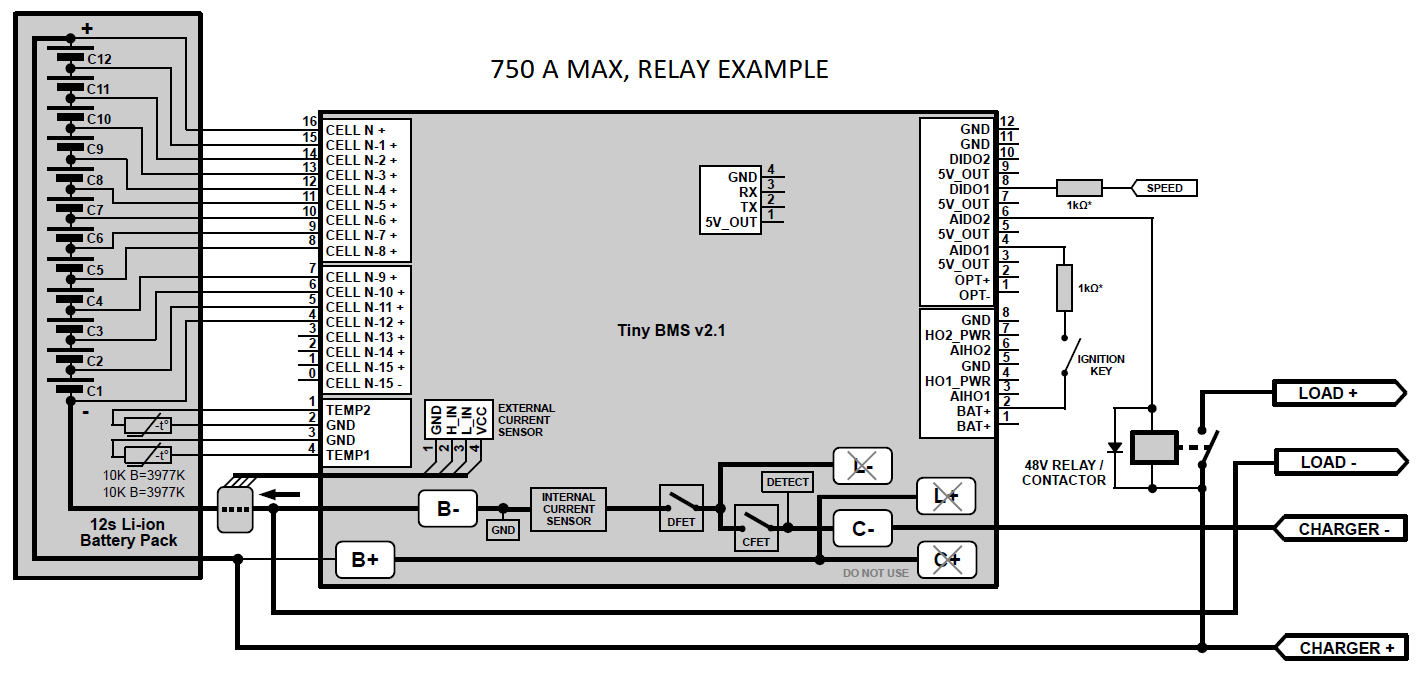Description
Battery Monitoring System – TinyAFE up to 1000V Slave Board Digital Analog-Front-End Battery Monitoring for Custom High Voltage Applications
Battery Monitoring System – TinyAFE up to 1000V is a slave board digital analog-frontend for custom high voltage applications is an essential component for creating large high voltage Lithium systems. TinyAFE supports lithium batteries of any chemistry and is stackable up to 1000V. Isolated communication allows connecting battery packs in series, i.e. with one master control unit, client can monitor and control high voltage battery pack. Single TinyAFE manages up to 16 cells in series, including voltage and temperature measurement and cell balancing, and connects in series with other groups, forming high voltage battery packs.
TinyAFE should be treated as an analog front-end for data acquisition and cell interface, however all of BMS functions are carried out in the master, to be developed by the customer, for now.
In summary, in battery monitoring applications, the AFE serves as the interface that prepares analog signals (voltage, temperature) from the battery for digital processing. It also includes interfaces for real-time monitoring. This is crucial in applications where batteries are used, such as in electric vehicles, uninterruptible power supplies (UPS), and renewable energy systems.
FLEXIBILITY
User-upgradeable firmware allows quick updates, bringing bug fixes, new features and other improvements, such as client-specific functionality. Integrated communication bus allows easy reconfiguration and streaming of real time data.
APPLICATIONS
- High Voltage Battery Systems
- Formula SAE Electric with High Voltage Batteries
- Stationary Solar & Wind Storage
- Personal Transportation with High Voltage Batteries
- Large drones
- Special Purpose Machines
- Renewable energy
- Industrial Equipment
- Energy Storage Systems (ESS)
- Off-Grid Power Systems
Views: 9566
SAFETY
To ensure the security of you and your surroundings, please read these rules and follow all the guidelines contained installation instructions of our Battery Management System (TinyAFE):
• DO NOT use the system where it may cause interference (eg. medical equipment);
• DO NOT use the system in an explosive environment;
• The system is NOT resistant to the chemical environment and mechanical stress;
• All electrical equipment MUST be rated for the voltage of the battery and battery management system;
• Use double-insulated tools;
• DO NOT short-circuit the battery or battery management system terminals, this could cause the damage to the product or the personal property;
• DO NOT lay tools or metal parts on top of the batteries or near the battery management system cable lugs;
• Before establishing connections, make sure to verify polarity.
This list is not exhaustive, and it is the responsibility of the system designer / installer to conduct their own failure mode analysis and determine what is required.
Working around batteries is DANGEROUS. Risk associated with improper use of the battery with the TinyAFE device includes: short-circuit, fire or explosion.
Read the ENTIRE documentation to become familiar with the TinyAFE device and its features before operating. Failure to operate the product correctly and safely may result in damage to the product, personal property and cause serious injury.
Throughout the literature the term “Note:” will be used to indicate procedures which, if not properly followed, create a possibility of physical property damage.
Using TinyAFE device requires at least basic knowledge in electronics and electrical engineering. Enepaq will not be held responsible for damage to the battery or any consequence, if the TinyAFE device is used improperly and no warranty is provided in such case.
Views: 9566
What is AFE?
In the context of battery monitoring, an Analog Front End (AFE) is a critical component that helps interface between the battery and the digital control and monitoring system. Here’s how an AFE is typically used in battery monitoring applications:
- Signal Filtering:
- Batteries can generate noise and voltage transients due to various factors, including load changes. Filtering within the AFE helps remove unwanted noise and stabilize the signals, ensuring accurate measurements.
- Analog-to-Digital Conversion (ADC):
- Battery voltage need to be monitored digitally for precise control and management. AFEs incorporate ADCs to convert these analog signals into digital form. The resulting digital data can be processed by a microcontroller or battery management system (BMS).
- Voltage References:
- AFEs often include voltage references to ensure the accuracy of ADC conversions. This is critical for precise battery voltage measurements.
- Temperature Monitoring:
- Battery health is closely related to temperature. AFEs can include temperature sensors or interfaces to external temperature sensors to monitor the battery’s temperature. This information is crucial for preventing over-temperature conditions.
- Data Interface:
- AFEs provide a digital interface for communicating the measured and processed battery data to a microcontroller or battery management system. This allows for real-time monitoring and control of the battery.
- Alerts and Alarms:
- AFEs can generate alerts and alarms based on the monitored parameters. For example, if a battery voltage exceeds safe limits, the AFE can trigger an alert to initiate protective actions.
In summary, in battery monitoring applications, the AFE serves as the interface that prepares analog signals (voltage, temperature) from the battery for digital processing. It also includes interfaces for real-time monitoring. This is crucial in applications where batteries are used, such as in electric vehicles, uninterruptible power supplies (UPS), and renewable energy systems.
Views: 9566

